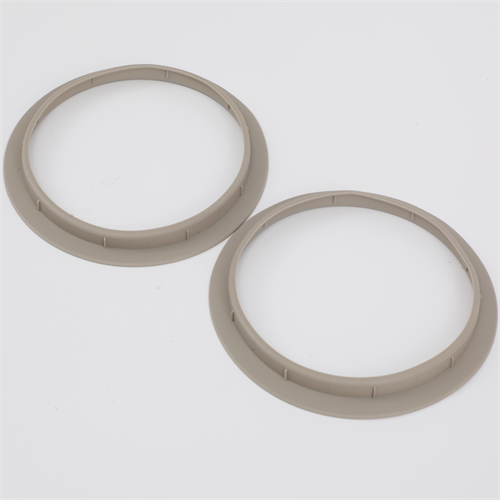O-rings are used in hydraulic and pneumatic systems and various mechanical equipment and components to seal under static or moving conditions under specified pressures, temperatures and different liquid and gas media. All of these people should understand the difference, but do you know how to make an O-ring work better? First of all, we should know that O-rings are generally not reusable. Second, when the O-ring is installed in the groove, care should be taken not to distort the O-ring, and the sealing medium should be coated on the groove and O-ring.
Another point is that when rubber O-rings are not used, we should try not to open the original packaging of the O-ring, so as not to dust or foreign matter damage the O-ring.
If the O-ring is to be stored, avoid direct sunlight or place it near a hot heat source (such as a boiler) to avoid premature aging of the O-ring.
Special attention should be paid to the occasional discoloration of the O-ring during storage, i.e. the production of white powder on the surface of the O-ring. But don't worry, this won't adversely affect the O-ring's function.
Preservation conditions of rubber O-rings. O-rings are subject to a variety of external environmental factors, such as deformation, oxygen, ozone, light, heat sources, humidity, oil, or chemical solvents. O-rings may fail due to changes in their physical and chemical properties. The storage, cleaning and maintenance of rubber seals are basically stipulated.
1: Temperature :5-25℃ is the ideal storage temperature. Avoid heat and sunlight. Seals removed from cryogenic storage should be placed in an environment of 20℃ before use.
2: Humidity: The relative humidity of the warehouse should be lower than 70% to avoid too wet or too dry and condensation.
3. Lighting: Avoid sunlight and strong artificial light sources containing ultraviolet rays. Uv protection bags offer the best protection. It is recommended that war ehouse Windows be painted with red or orange paint or film.
Radiation: Avoid damage to silicone seals by ionizing radiation.
Oxygen and ozone: Rubber materials should be protected from exposure to recycled air. This can be done by packaging, winding, storing in air-tight containers, or other suitable methods. Ozone is harmful to most elastomers. The following equipment should be avoided in the warehouse: mercury vapor lamps, high voltage electrical equipment, motors and other equipment.
Deformation: Rubber parts should be placed as freely as possible to avoid stretching, compression or other deformation.
Contact with liquid or semi-solid materials: no solvents, oils, fats or other semi-solid materials.
Do not touch metallic or non-metallic materials: magnetic materials, cast iron, copper and its alloys, or materials that may damage rubber. PVC material cannot be used for packing seals. Seals of different materials shall not be mixed.
Cleaning: Soap and water can be used to clean the seals as needed. However, water should not be allowed to touch fiber-reinforced seals, rubber-metal adhesive seals, and gold material seals. Do not use disinfectants, organic solvents and sharp tools.

Copyright © Dongguan Longxiang Rubber Plastic Hardware Products Co.,Ltd All Rights Reserved. sitemap.xml | sitemap.html | Terms & Conditions | Privacy